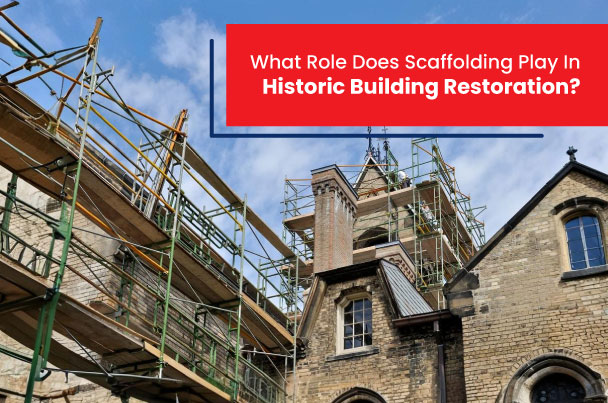
In the present era, restoring historic buildings is an overwhelming task. As workers have to carry out the tasks with accuracy, they have to use scaffolding. Such a temporary structure will not just help access areas at heights. Instead, it will provide a safe and stable platform for performing repairs.
So, in this article, we shall cover more about the role of scaffolding for historic restoration. The article will also let you know why you must work closely with conservation experts.
Preservation of Structure and Detail
Through the years, scaffolding has played a role in preserving monuments. These have provided structural support that’s required for restoration. Workers can also carry out maintenance tasks without running the monument. Once the scaffold is erected, it enables workers to access hard-to-reach areas.
They can move on with repairs accurately for intricate carvings or damaged surfaces. By offering a stable environment, the structure also secures the monuments against deterioration. After using the scaffold often, the team can also remove debris effectively. Moreover, the temporary structure enables detailed conservation work.
This helps to extend the lifespan of the monument. It also helps to maintain the historical significance.
Enhancing Worker Safety
Besides helping workers preserve monuments, scaffolding for historic restoration ensures safety. While these offer a stable platform, they provide access to different areas. This ensures that the workers can restore the architectural details at heights. Besides, the workers can also perform tasks like cleaning or repairing at different heights.
But, with the use of guardrails, scaffolding can secure the workers against falls. The risk of structural instability is also reduced due to even distribution of weight. Soon after a safe work environment is created, the scaffold can safeguard the well-being of teams. This aspect is taken care of while preserving the structure’s integrity.
Above all, scaffolds are designed to comply with safety standards. Hence, the restoration projects can be completed without any incidents.
Accessibility and Flexibility
As soon as a scaffold is set up, it enhances flexibility and accessibility for restoration work. Once the workers ascend or descend the structure, it helps them to access areas safely. They can also conduct the construction tasks for roofs and intricate architectural details. Owing to the modular design, the workers can also adjust the scaffold.
This further ensures them to navigate around different obstacles and perform tasks efficiently. In addition, a scaffold can be reconfigured so that it helps in addressing the restoration needs. This adaptability facilitates repairs more effectively.
Workers will also be able to examine the historic building properly. Tasks will then be carried out by the workers without compromising precision.
Environmental Considerations
When workers use scaffolding for historic restoration, environmental considerations are critical. These will reduce the impact of the structure and the surrounding region. It’s important to ensure that the scaffolding materials are durable. With a focus on sustainability, the scaffolding materials also have to be non-toxic.
Workers must continue carrying out the process carefully after installing the temporary structure. Certain steps must be followed to prevent damage to the region. Additionally, the team must ensure that there is less debris during the restoration work. Using netting can also help to keep materials and reduce pollution.
Ultimately, workers must use eco-friendly materials during installation. Environmentally responsible practices like conserving energy must also be considered. Workers can also carry out the restoration work without using invasive techniques.
Working closely with conservation experts
When you want to restore historic buildings, working with architects is essential. Collaborating with conservation experts and historians can also be helpful. Here’s when scaffolding for historic restoration can help retain the historical context.
As soon as the scaffold is introduced, teams can later find solutions to meet the practical needs. For instance, a scaffold while restoring a church can ensure access for many visitors. Even when the restoration work is in progress, the building will tend to serve its community.
Before collaborating with the experts, the historic building will be evaluated comprehensively. Soon after an assessment, teams will present a restoration plan.
This plan will present the details about the restoration techniques that need to be applied. Later, the conservation experts will offer suggestions regarding the materials. As the restoration process progresses, the experts will continuously monitor the work.
This will ensure whether the preservation guidelines are properly followed.
Conclusion
Finally, restoration scaffolding plays a vital role in restoring antique buildings. Apart from offering support, these provide access to several areas. While the temporary structure ensures safety, it enables workers to preserve the monuments.
Way ahead, erecting scaffolds will be essential as restoration activities evolve. However, to maintain the architectural heritage, working closely with conservation experts will help.
If you’re planning to erect a scaffold for restoring monuments, then why not connect with Scaffolds Supply? As soon as you visit the official website, you will be able to source suitable components at the best price.
Eventually, you shouldn’t worry about the components as they are designed with safety in mind.











Comments are closed